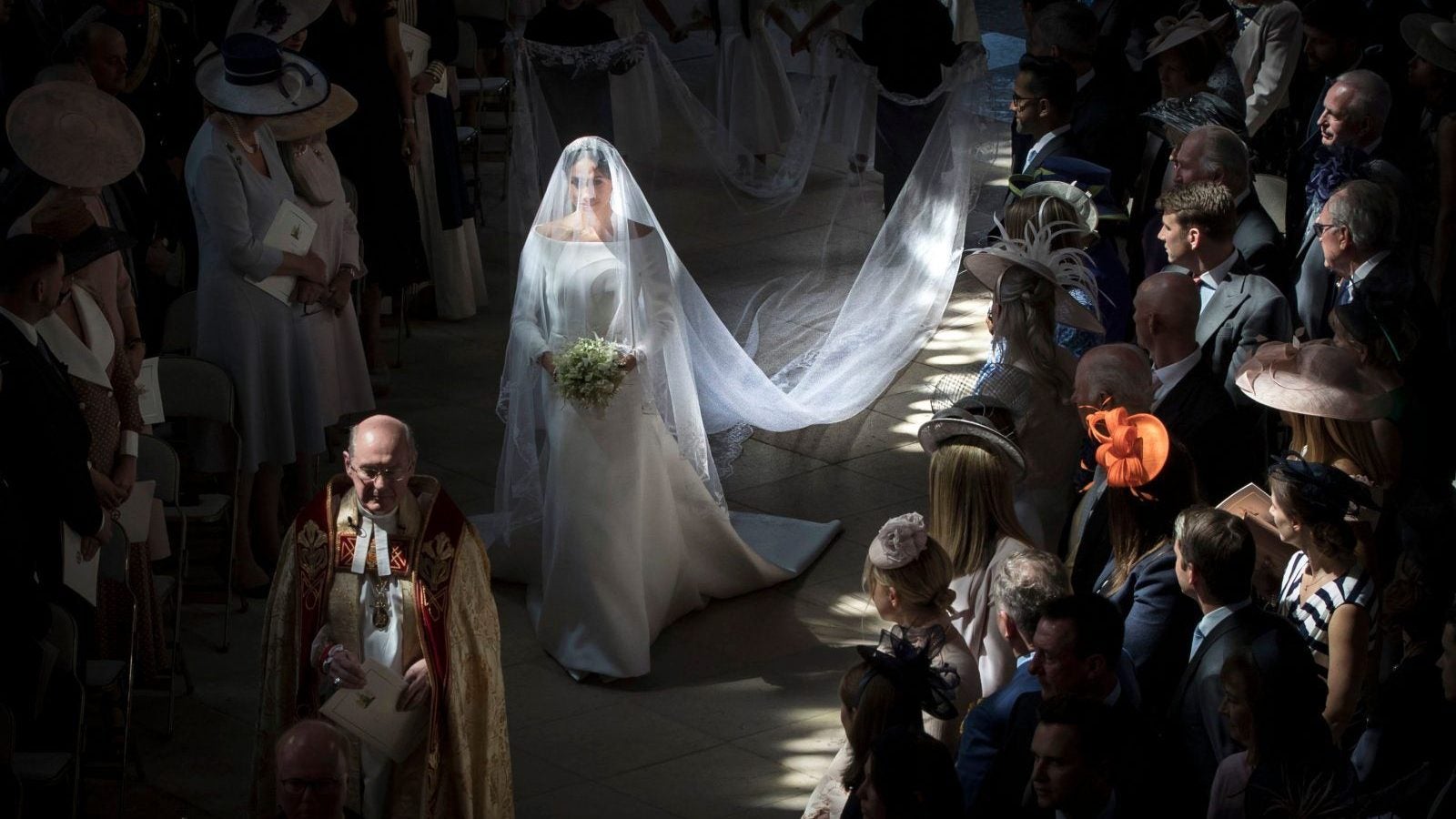Meghan Markle’s beautiful veil was stained by Britain’s ugly colonial past
Meghan Markle wore a beautifully simple, ivory silk dress at her wedding to Britain’s prince Harry on Saturday (May 19) morning. The royal wedding has been a global media event though of not much relevance even to the British crown. After all, Harry is the sixth in the line of succession to the throne. And given the pressing world news from just the past week—the killing of dozens of Palestinians in Gaza, and North Korea’s threat of withdrawing from nuclear talks—a celebration of the monarchy, of a country barely able to keep itself together, appears strikingly overwrought.


Meghan Markle wore a beautifully simple, ivory silk dress at her wedding to Britain’s prince Harry on Saturday (May 19) morning. The royal wedding has been a global media event though of not much relevance even to the British crown. After all, Harry is the sixth in the line of succession to the throne. And given the pressing world news from just the past week—the killing of dozens of Palestinians in Gaza, and North Korea’s threat of withdrawing from nuclear talks—a celebration of the monarchy, of a country barely able to keep itself together, appears strikingly overwrought.
Markle’s wedding dress was created by Clare Waight Keller, a British woman and the first female designer of Givenchy. The garment’s most dazzling feature is its 16.5-foot silk tulle veil that has been hand-embroidered with flora representing the 53 countries of the Commonwealth. The media was all praise for the dress as a sartorial choice that represents a break from tradition. The New York Times’s fashion critic raved that it “placed the woman proudly front center and underscored Ms Markle’s own independence.” The simplicity of the dress was also widely praised for upholding feminist values rather than those of a fairy-tale princess.
Missing in the commentary was what seems to be an obvious point—the arrogant representation of 53 Commonwealth countries is a celebration of colonial rule. Another reminder, if one was needed, that the true reckoning of the unfortunate history of colonialism in Britain is far away. It is important to restate what that was—a violent period of centuries when the hapless Commonwealth, nearly 25% of the world, suffered under an extractive alien power’s rule.
A conscious choice
Markle’s dress was not a designer’s fanciful faux-pas but a conscious choice. The BBC reports that the bride suggested the design because the Commonwealth will be an essential part of her and prince Harry’s official work after they are married. Clearly, the sad truth of Britain’s imperial history eludes the prince and the new princess. The media too, especially British, abets this glossing over. And this matters, as recently as 2014, a YouGov survey, for instance, found that most people in Britain still think the British Empire is more something to be proud of (59%) rather than ashamed of (19%).
To add insult to injury, the dress is being celebrated as a hand-crafted work, the creation of a local designer. If one just looked at India, the largest of the Commonwealth countries, of the many British-era atrocities, none were more consequential and impoverishing than the destruction of the local handloom and textiles of India. In the early days of the British East India Company’s trade with the subcontinent in the 1600s, chintz, the hand-printed and natural-dyed fabric with floral designs, was the rage in Europe; first as decorative household furnishings and later for fashionable garments. Known as palampores in Britain, these fabrics and other fine Indian textiles gained so much popularity that a parliamentary act was passed prohibiting their sales.
From this time, until India’s Independence in 1947, the Indian artisan and weaver’s livelihood and skills were systematically destroyed. It was no accident then that Gandhi chose the charkha, the Indian weavers’ basic cotton-spinning tool, as the symbol of India’s struggle for independence.
Markle’s British-designer dress and its veil with the hand-embroidered flora of the 53 Commonwealth countries overshadows this dark past. It should not surprise us, given the new age of denialism, that the royal family and the British media thought nothing of reclaiming the bloody history of colonialism as a point of celebration.
This post first appeared on Scroll.in. We welcome your comments at [email protected].